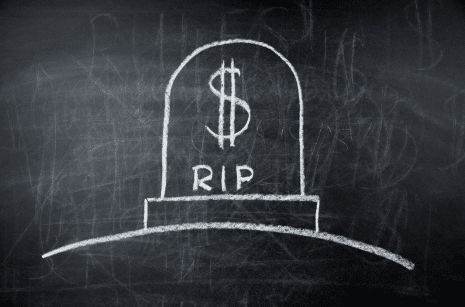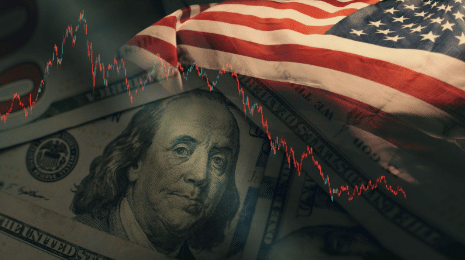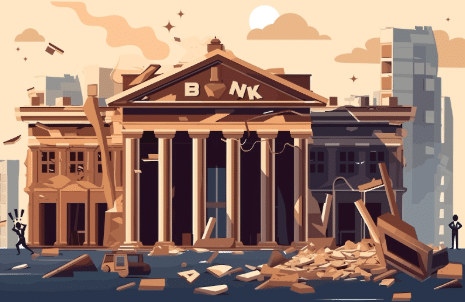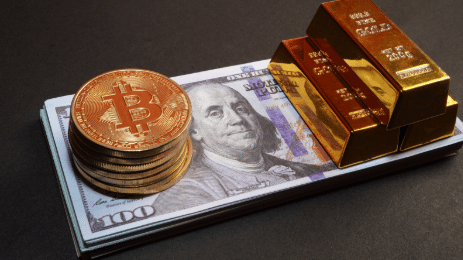
The New Commodity Supercycle: A Decade of Price Surges Ahead
During periods of easy money, risk assets like stocks tend to outperform as investors chase gains, but during times of economic strife, commodities become the safe haven for many investors. According to one analyst, now is the time to prepare for a commodity supercycle.
“The last [two] times we saw these valuations for commodities was 1971 and 2000,” tweeted MN Consultancy founder Michaël van de Poppe. “Commodities & #Crypto are extremely undervalued and it's likely that commodities go into a 10-year long bull market.”

“I'm expecting a lot of upside from these two asset classes,” Poppe said.
As shown in the image above, commodities are currently valued at levels lower than in the lead-up to the dot-com bubble of 2000 and the 2008 financial crisis, and if history is any guide, they could soon rapidly catch up to the field as investors rotate out of an overheated stock market.
Analysts at Bank of America have a similar outlook as Poppe, saying that a secular bull run in commodities is just starting and suggesting that investors should consider allocating to commodities instead of bonds in a 60/40 investment portfolio.
According to a recent “Flow Show” note from BofA Investment Strategist Jared Woodard, a “commodity secular bull market in the 2020s is just getting started as debt, deficits, demographics, reverse-globalization, AI & net-zero policies all inflationary.”

“Commodities are a better ‘40’ than bonds in the 2020s,” Woodard said, suggesting that commodities have more upside potential than bonds in a standard 60/40 portfolio.
He noted that over the past four years, commodities have seen total returns of +116% while the U.S. 30-year Treasury bond has lost 39% to justify his statement. Annualized returns from commodity indexes have ranged from 10% to 14% “even amidst falling inflation and a dovish Fed,” he said.
The forming technical picture has many analysts calling for the start of a commodity supercyle.
According to Rick Mills, president and CEO of United Educators, a commodity supercycle “is a period of consistent price increases lasting more than five years, and in some cases, decades.”
As defined by the Bank of Canada, it's an “extended period during which commodity prices are well above or below their long-run trend,” he noted.
“Supercycles occur because of the long lag between commodity price signals and changes in supply,” Mills wrote. “While each commodity is different, the following is a rundown of a typical boom-bust cycle: As economies grow, so does the demand for commodities, and eventually, the demand outstrips supply. That leads to rising commodity prices, but the commodity producers don’t initially respond to the higher prices because they’re unsure whether they will last. As a result, the gap between demand and supply continues to widen, keeping upward pressure on prices.”
“Eventually, prices get so attractive that producers respond by making additional investments to boost supply, narrowing the supply and demand gap,” he added. “High prices continue to encourage investment until finally, supply overtakes demand, pushing prices down. But even as prices fall, supply continues to rise as investments made during the boom years bear fruit. Shortages turn to gluts, and commodities enter the bearish part of the cycle.”

Mills noted: "There have been multiple commodity supercycles throughout history. The most recent one started in 1996 and peaked in 2011, driven by raw material demand from rapid industrialization taking place in markets like Brazil, India, Russia and especially, China.”
Mills identified three indicators that all supercycles have in common: “a surge in supply, demand and price.”
“The new commodity supercycle, however, could look a bit different from the previous ones for one reason — the focus on attempts to limit global warming,” he warned. “According to S&P Global, a more aggressive commitment to the energy transition across G-20 nations could also create the conditions for a sustained surge in demand, supply and prices.”
Amid the push for electrification, Mills said that “Demand for copper – the cornerstone for all electricity-related technologies – is set to grow by 53% to 39 million metric tons by 2040, according to BloombergNEF. Battery metals like lithium, cobalt, and nickel will see even faster growth, reaching more than three times the current demand levels by 2030, says BNEF, with lithium rising the fastest with a seven-fold increase.”

“To reach net-zero, demand for these key metals needed for the deployment of energy transition technologies such as solar, wind, batteries, and electric vehicles will grow fivefold by 2050,” he added.
But more than anything, Mills pointed to the rising cost of goods as a clear sign that a commodity supercycle is underway.
“The final, most definitive indicator of a commodity supercycle is rising prices, and historically, supercycles tend to create inflation,” he said. “Over the past two years the Federal Reserve and other central banks have been fighting inflation that at one point reached the highest in 40 years; not since the early 1980s had price increases been so high.”
“The Fed raised interest rates to quell demand and bring prices down to its target inflation level of 2%. It worked,” he added. “A series of rate hikes since the spring of 2022 lowered inflation from the 95 peak in June 2022 to the current 2.9%. A remarkable feat and achieved with a ‘soft landing,’ i.e. no recession.”
“While some have argued that inflation would have come down anyway once COVID-related supply chain wrinkles were ironed out, we are not among them,” he noted. “The Fed had to do something to slow runaway prices, and monetary tightening/rate hikes were the answer.”
Mills also pointed out that while inflation may have stopped rising, it’s not gone, but has instead “compounded over the years and the prices of many goods, including commodities, remain high.”
“For proof of this, consult the chart below of the S&P GSCI commodities index,” he said. “The index peaked in June 2022, lining up with the inflation peak, and has since declined. But commodity prices today, tracked by the index, are still the highest they’ve been since October 2014.”

“Commodity prices have stayed buoyant despite relatively high interest rates, around 5%, high bond yields, and a high dollar – all headwinds for commodities,” Mills said. “While the Fed’s attack on inflation hasn’t done much to reduce demand – consumer spending increased by 0.5% in July, and second-quarter GDP growth rose by 3% – a slowing labor market has the Fed looking at a rate cut in September.”
“If interest rates are reduced, there will be an immediate effect on bond yields, which have already fallen this summer,” he warned. “The US 10-year Treasury note, for example, has gone from a year-to-date high of 4.7% in April to the current 3.9%. Bond yields and bond prices have an inverse relationship.”
As for whether this could “be the start of a bull market for bonds, and a bull market for commodities once the triad of lower rates, lower bond yields, and a lower dollar takes effect,” Mills said, “Look what happened to gold when the Fed last week telegraphed an interest rate cut.
“Spot gold set a record $2,531.60 on Powell’s dovish comments,” he highlighted. “Silver followed gold higher, breaking through $30/oz. Market participants should see this as a dry run for what actually happens when rates are reduced. Commodities and precious metals, [in my opinion], look like the place to be.”
“The new commodity supercycle is unique in the sense that supplies for several commodities are set to peak or have already peaked, causing market deficits and higher prices,” Mills noted. “Previously, surging demand and falling supply [were] the hallmarks of a market in decline (i.e. coal). But now, it’s not so much about producers being reluctant to invest, but more of demand rising too fast for supply to catch up.”
“The first green shoots of a new commodity supercycle, one based on raw materials for supplying the new electrified economy, are growing,” Mills said. “Silver and gold are up over 20% so far this year despite the headwinds of high bond yields and a strong US dollar. Copper has come down from its $ 5-a-pound pinnacle, but at $4.22, miners can still make money, although it’s not high enough to incentivize new mines. Iron ore has had a tough go of it, but it appears that the glut in supply is lessening, and the price is basing around $100 a ton.”
“We know one thing for sure. The case for all commodities rests upon the US dollar,” he concluded. “Once the Fed starts cutting interest rates, the dollar will weaken, and the entire commodities complex will strengthen.”
And according to commodity analyst Graddhy, while talk of a commodity supercycle is now starting to ramp up, the commodity bull market has actually been underway for more than four years, and investors would be wise to allocate accordingly before the momentum starts to pick up.
The financial market is crumbling and EVERYONE will be affected. Only those who know what's going on and PREPARE will survive... dare we say thrive. Our 7 Simple Action Items to Protect Your Bank Account will give you the tools you need to make informed decisions to protect yourself and the ones you love.









